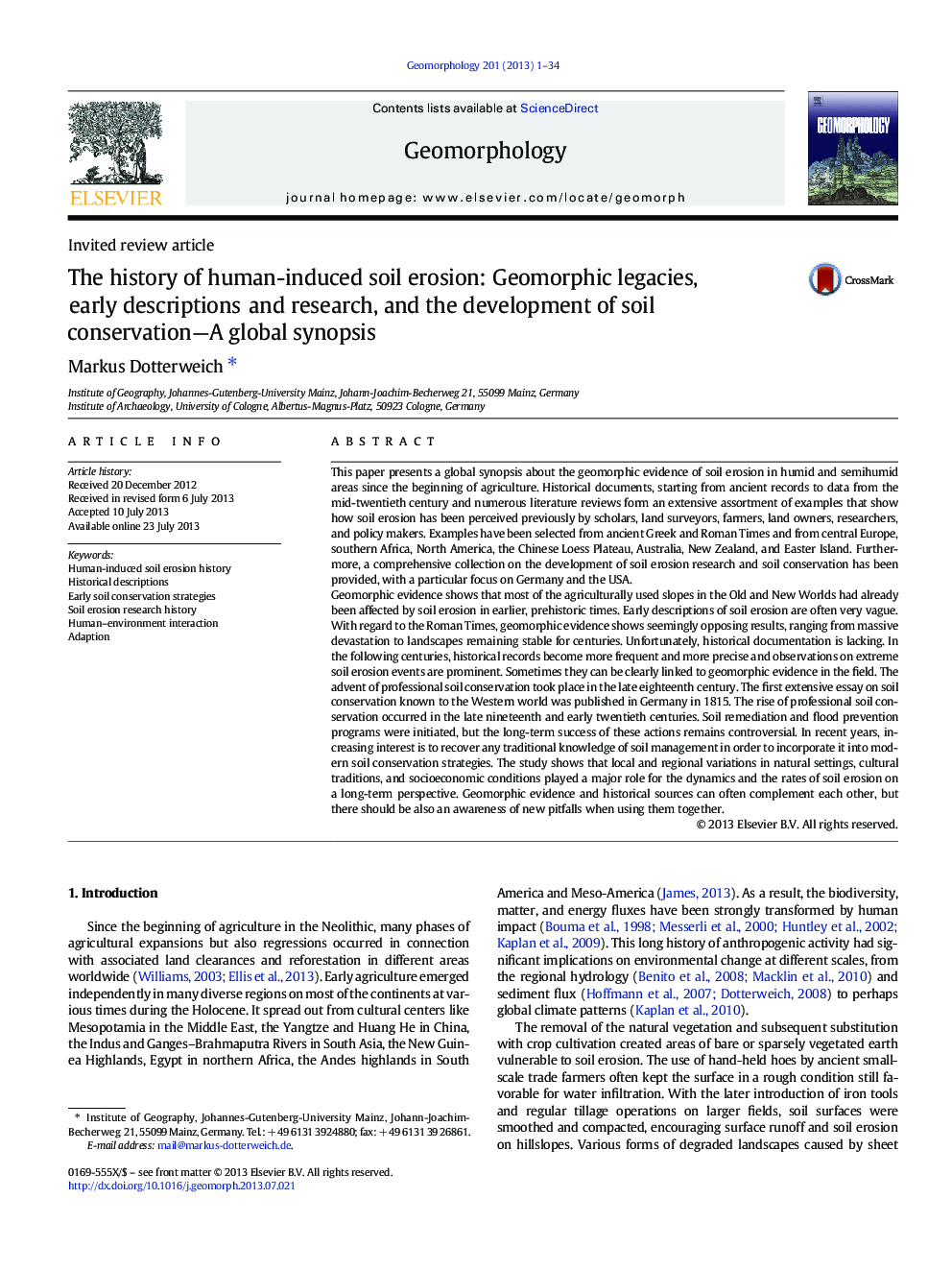| کد مقاله | کد نشریه | سال انتشار | مقاله انگلیسی | نسخه تمام متن |
|---|---|---|---|---|
| 6432623 | 1635448 | 2013 | 34 صفحه PDF | دانلود رایگان |

- Global overview about soil erosion since the beginning of agriculture
- Collection of citations and figures from less well-known essays and reports
- Historical descriptions cover a period of 2500Â years.
- Professional soil conservation research emerged in the late 18th century CE.
- Historical descriptions provide valuable data to understand long-term soil erosion.
This paper presents a global synopsis about the geomorphic evidence of soil erosion in humid and semihumid areas since the beginning of agriculture. Historical documents, starting from ancient records to data from the mid-twentieth century and numerous literature reviews form an extensive assortment of examples that show how soil erosion has been perceived previously by scholars, land surveyors, farmers, land owners, researchers, and policy makers. Examples have been selected from ancient Greek and Roman Times and from central Europe, southern Africa, North America, the Chinese Loess Plateau, Australia, New Zealand, and Easter Island. Furthermore, a comprehensive collection on the development of soil erosion research and soil conservation has been provided, with a particular focus on Germany and the USA.Geomorphic evidence shows that most of the agriculturally used slopes in the Old and New Worlds had already been affected by soil erosion in earlier, prehistoric times. Early descriptions of soil erosion are often very vague. With regard to the Roman Times, geomorphic evidence shows seemingly opposing results, ranging from massive devastation to landscapes remaining stable for centuries. Unfortunately, historical documentation is lacking. In the following centuries, historical records become more frequent and more precise and observations on extreme soil erosion events are prominent. Sometimes they can be clearly linked to geomorphic evidence in the field. The advent of professional soil conservation took place in the late eighteenth century. The first extensive essay on soil conservation known to the Western world was published in Germany in 1815. The rise of professional soil conservation occurred in the late nineteenth and early twentieth centuries. Soil remediation and flood prevention programs were initiated, but the long-term success of these actions remains controversial. In recent years, increasing interest is to recover any traditional knowledge of soil management in order to incorporate it into modern soil conservation strategies. The study shows that local and regional variations in natural settings, cultural traditions, and socioeconomic conditions played a major role for the dynamics and the rates of soil erosion on a long-term perspective. Geomorphic evidence and historical sources can often complement each other, but there should be also an awareness of new pitfalls when using them together.
Journal: Geomorphology - Volume 201, 1 November 2013, Pages 1-34